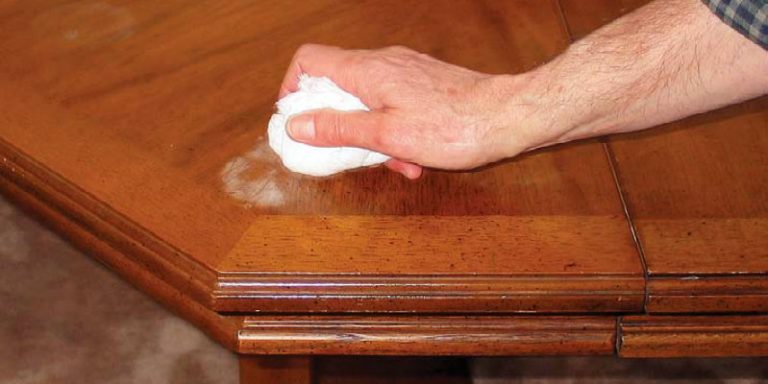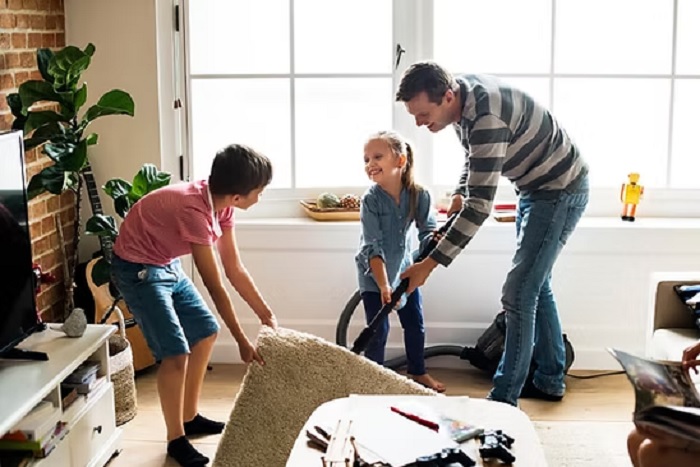
A well-maintained, organized home not only provides a sense of peace and comfort, but it also increases the functionality of your living space. In a world that often seems chaotic, having a space that is both orderly and well-cared-for brings about a sense of accomplishment and reduces daily stress. From creating efficient storage solutions to developing a solid maintenance routine, keeping your home in top shape requires both time and a clear plan.
In this article, we will explore how to improve your home with effective organization and maintenance. By creating systems that promote order and adopting strategies for regular upkeep, you can transform your living environment into a space that is both beautiful and highly functional.
Why Organization and Maintenance Matter
Before diving into actionable steps, it’s essential to understand why organization and maintenance are so important. A disorganized home often feels chaotic and overwhelming. Clutter piles up quickly, and a lack of systems in place leads to constant searching for items, which wastes time and contributes to stress. In contrast, an organized space fosters a sense of calm and order. With everything in its designated place, daily tasks become smoother, and it’s easier to focus on what matters.
Maintenance is the other critical pillar. Regular upkeep helps to preserve the value of your home and prevents the deterioration of appliances, furniture, and the structural integrity of the building itself. By maintaining your home regularly, you can avoid costly repairs in the future and ensure your environment remains safe, clean, and inviting.
When both organization and maintenance work together, they create an efficient, well-functioning home. This not only enhances your day-to-day experience but also adds long-term value to your property.
Step 1: Declutter First, Then Organize
The first step to improving your home is decluttering. A home filled with excess items can be overwhelming, both mentally and physically. Decluttering creates a clean slate, making it easier to implement organizational systems and ensuring that the items you choose to keep are meaningful and useful.
Begin with one room at a time. Sort through everything you own and ask yourself whether the item is necessary, functional, or emotionally valuable. Items that are no longer needed or used should either be donated, sold, or responsibly recycled. Once you’ve reduced the clutter, it’s much easier to organize the remaining items efficiently.
For example, in your living room, you might find that piles of magazines, old remote controls, or unused electronics are taking up space. Clear out the unnecessary items and then create storage solutions—such as stylish baskets or dedicated drawers for remotes and chargers—that keep everything in its place.
Step 2: Implement Smart Storage Solutions
Now that you’ve cleared the clutter, the next step is to find effective ways to organize the items you’re keeping. The key to organizing a home is using storage solutions that are not only functional but also aesthetically pleasing.
Furniture with Built-in Storage: Opt for multi-purpose furniture that doubles as storage. Coffee tables with hidden compartments, beds with drawers underneath, and storage ottomans help maximize space in living rooms and bedrooms without adding more bulky furniture.
Vertical Storage: Make the most of your wall space by installing shelves and hooks. Wall-mounted shelves are perfect for storing books, plants, or decorative pieces. Hooks and racks are ideal for coats, bags, hats, or accessories. Vertical storage is especially useful in smaller spaces where floor space is limited.
Baskets and Bins: Use baskets and bins in closets, bathrooms, and under-the-bed storage to keep items organized and out of sight. Labeling these containers can also make it easy to find what you need quickly, which reduces the time spent searching for things.
Drawer Organizers: For kitchens, bathrooms, and office spaces, drawer organizers can transform chaos into order. Dividers in kitchen drawers, for instance, can neatly store utensils, cutlery, and kitchen tools, ensuring that everything is within easy reach but hidden from view.
Declutter Daily: Make it a habit to tidy up regularly by putting things back where they belong. A few minutes each day can prevent things from piling up and becoming overwhelming. Having designated spots for all your belongings ensures that you don’t accumulate unnecessary clutter.
Step 3: Maintenance—The Foundation of Longevity
Once your home is organized, it’s time to focus on its upkeep. Maintenance is essential to preserving both the functionality and appearance of your living space. By regularly addressing small issues before they become major problems, you can extend the life of your furniture, appliances, and home fixtures.
Create a Maintenance Checklist: Similar to a cleaning schedule, a maintenance checklist helps ensure that your home’s systems and appliances are being serviced regularly. A simple way to start is by breaking down tasks into daily, weekly, monthly, and seasonal categories.
-
Daily: This includes tasks like wiping down kitchen counters, vacuuming high-traffic areas, and keeping bathroom surfaces clean.
-
Weekly: Focus on deeper cleaning tasks such as cleaning floors, dusting furniture, and sanitizing the bathroom.
-
Monthly: Tackle tasks like checking smoke detectors, cleaning the refrigerator, and deep cleaning carpets or upholstery.
-
Seasonal: Prepare for the changing seasons with tasks like cleaning gutters, servicing the HVAC system, and checking for air leaks around windows and doors.
Having a routine will ensure you don’t overlook any important maintenance tasks. When you address issues on a regular basis, you’ll save both time and money in the long run.
Take Care of Small Problems Immediately: The longer a small issue is ignored, the more expensive and time-consuming it becomes to fix. Whether it’s a leaky faucet, a broken tile, or a malfunctioning appliance, it’s better to address problems as soon as they arise. Not only will this save you from bigger repairs down the road, but it will also prevent these issues from affecting the overall comfort and safety of your home.
Service Major Appliances: Regular maintenance of major appliances such as the dishwasher, washing machine, refrigerator, and air conditioning system will improve their efficiency and extend their lifespan. Most manufacturers provide maintenance guidelines that can help you ensure that your appliances continue to run smoothly for years.
Inspect the Exterior: The exterior of your home often requires just as much attention as the interior. Periodically check your roof, windows, and doors for any signs of wear and tear. In addition to ensuring your home is secure, regular exterior maintenance also prevents potential weather-related damage.
Step 4: Regular Cleaning for Long-Term Organization
While organizing and maintaining your home focuses on keeping things in order, cleaning is essential to ensure the space feels fresh and inviting. Regular cleaning is the final step in keeping your home in its best condition, as dirt and grime can quickly build up and disrupt the organized space you’ve worked hard to create.
Use Eco-Friendly Cleaning Products: Using environmentally friendly cleaning products is not only better for the planet, but it also creates a healthier living environment. Many store-bought cleaners contain harsh chemicals that can affect indoor air quality. Opt for natural alternatives such as vinegar, baking soda, and essential oils for a non-toxic cleaning solution.
Keep Surfaces Neat: Make sure that surfaces such as countertops, tables, and shelves remain free of clutter and dust. Regular cleaning and maintenance of these surfaces will not only keep your home looking polished but also preserve the materials and finishes.
Deep Clean Periodically: In addition to routine cleaning, schedule deep-cleaning sessions to tackle neglected areas such as baseboards, vents, light fixtures, and behind furniture. This will help remove hidden dirt and keep your home in pristine condition.
Step 5: Creating Sustainable Habits
Organizing and maintaining your home are ongoing processes, but developing habits that foster long-term sustainability will make both tasks much easier. Encourage everyone in your household to adopt habits such as cleaning up after themselves, putting things away after use, and staying on top of regular maintenance tasks. With a little effort each day, you can maintain a harmonious, organized home without feeling overwhelmed.
Final Thoughts
Improving your home with organization and maintenance is not a one-time project but a continuous journey. By implementing smart storage solutions, creating a routine for maintenance, and cleaning regularly, you can turn your home into a space that is not only visually appealing but also functional, comfortable, and sustainable. The key is to break the process into manageable steps and commit to consistent upkeep. Over time, this commitment will not only improve the look and feel of your home but will also enhance your overall quality of life.





